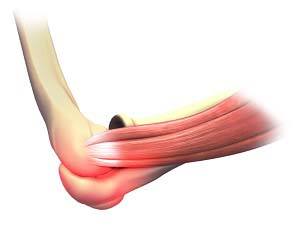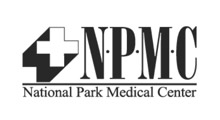Sprains/Strains
Wrist Sprain

Injuries caused due to stretching or tearing of the ligaments in the wrist are called wrist sprains. These injuries are usually caused by a fall during daily activities or sports activities. Sprains can range from mild to severe based on the extent of injury to the ligament. Some of the main symptoms of wrist sprains include:
- Swelling and pain in the wrist
- Difficulty in moving the wrist
- Bruising around the wrist
- Popping sensation inside the wrist
- A feeling of warmth or feverishness in the wrist
Your doctor diagnoses this condition with the help of your medical history and physical examination of your wrist. Your doctor may also use imaging tests such as X-rays, CT scans and MRI to diagnose partial ligament tears.
Treatment for wrist sprains includes surgical and non-surgical treatments. Non-surgical treatment involves immobilization of the wrist and performing strengthening exercises once the pain has reduced. Surgical treatment is used to repair the ligament if it is completely torn.
Finger and Thumb Sprain
Injuries that involve tearing or stretching of the ligaments of your fingers are termed as sprains. Sprains in the fingers are most often caused from a fall when you extend your arms to reduce the impact of the fall, or from overuse or repetitive activity of the thumb such as with texting.
Some of the symptoms of finger sprains include:
- Reduction in your ability to grasp items
- Pain immediately after the injury
- Swelling and bruising of the fingers
- Redness and tenderness
Finger sprains are diagnosed with the help of a physical examination of the hand to check for any abnormalities by moving your fingers in different positions. Your doctor may also suggest imaging tests such as X-rays to find the exact location of the injury.
Finger sprains can be treated with the help of applying ice packs and immobilizing your finger to allow it to heal. You may also be given pain medications to reduce discomfort. Once your fingers heal, you will be advised to perform strengthening exercises to strengthen your fingers. Surgical treatment is very rare and may be required only in complex cases where the ligament is completely torn.
Elbow Sprain

What is an Elbow Sprain?
Elbow sprain is an injury to the soft tissues of the elbow. It is caused due to stretching or tearing (partial or full) of the ligaments which support the elbow joint. Ligaments are a group of fibrous tissues that connect one bone to another in the body.
Anatomy of the Elbow
The Elbow is a complex hinge joint formed by the articulation of three bones - humerus, radius and ulna. The upper arm bone or humerus connects the shoulder to the elbow forming the upper portion of the hinge joint. The lower arm consists of two bones, the radius and the ulna. These bones connect the wrist to the elbow to form the lower portion of the hinge joint. A joint capsule surrounds the elbow joint which contains lubricating fluid called synovial fluid.
The three joints of the elbow are:
- Ulnohumeral joint, the junction between the ulna and humerus
- Radiohumeral joint, the junction between the radius and humerus
- Proximal radioulnar joint, the junction between the radius and ulna
The elbow is held in place with the support of various soft tissues including:
- Cartilage
- Tendons
- Ligaments
- Muscles
- Nerves
- Blood vessels and
- Bursae
The various movements of an elbow joint are:
- Flexion
- Extension
- Pronation
- Supination
Causes of Elbow Sprains
The various causes of an elbow sprain are:
- Involuntary twisting of the arm during sport activities
- Traumatic injury to the elbow due to accidents or a fall
- Overstretching of the elbow during exercise increases tension on the elbow tendons
- Lack of warming up and stretching prior to performing exercises or sports activities
- Medical history of previous elbow sprains make you more vulnerable to another sprain
Symptoms of Elbow Sprains
The common symptoms of elbow sprain include:
- Pain, swelling, tenderness, and bruising around the elbow
- Restricted movement of the elbow
- Pain at the elbow joint while stretching
Elbow sprains are graded depending upon the severity of the symptoms as grade I (mild), grade II (moderate) and grade III (severe). Severe elbow sprains of grade III can lead to elbow dislocation or joint instability.
Diagnosis of Elbow Sprains
Your doctor will take a detailed medical history and do a thorough physical examination. An X-ray of the elbow may be necessary to rule out any fractures or other disease conditions. Rarely, an MRI may be ordered.
Treatment options for Elbow Sprains
The treatment for an elbow sprain is as follows:
- Rest: Avoid using the affected elbow for a few weeks. Restrict all activities that cause overuse of the elbow.
- Ice packs: Apply ice packs wrapped in a towel over the sprained elbow for 15-20 minutes at a time to help alleviate any possible pain and swelling.
- Compression: An elastic compression bandage is used to wrap and support the elbow to reduce swelling. Take care not to wrap too tightly which could constrict the blood vessels.
- Elevation: Keep your sprained elbow elevated as much as possible. This can be done by placing pillows under your arm.
- Immobilization: A sling or splint may be applied to stabilize the elbow joint.
- Medications: You will be prescribed pain medications to keep you comfortable, and antibiotics to prevent infection.
- Physical therapy: Learn appropriate hand exercises that strengthen your forearm muscles. Various modalities of physical therapy such as massage, ultrasound, and muscle stimulation may also be performed to improve muscle strength.
- Surgery: Generally, elbow sprains do not require surgery. It is indicated only in cases of severe damage or tear of the ligament.
Prevention of Elbow Sprains
There are measures to prevent elbow injury risk such as:
- Exercise on a regular basis to improve muscle strength
- Eat a healthy diet which includes a good variety of nutritious foods
- Use well-checked equipment for any sport activities
- Always warm-up and stretch your muscles prior to performing exercises or sports activities






